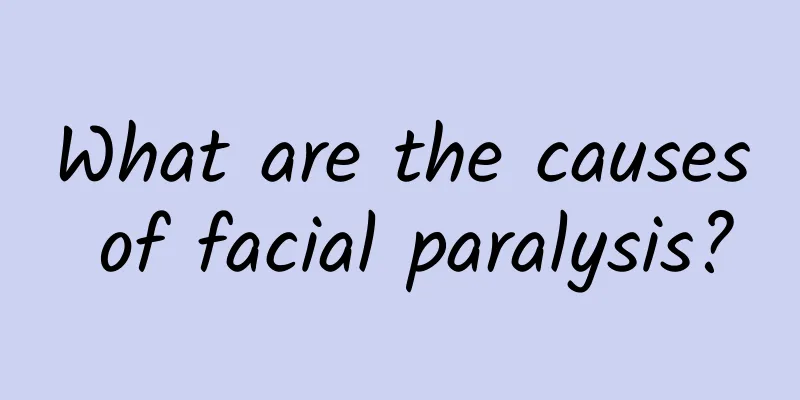What are the causes of facial paralysis?

|
There is a reason for the occurrence of any disease, and the same is true for facial paralysis. According to professionals, there are many causes of facial paralysis, infectious diseases, acute leukemia, mechanical injuries, trauma and poisoning are all common inducing factors. (A) Causes of peripheral facial paralysis: (1) Infectious diseases: herpes zoster oticus, meningitis, mumps, scarlet fever, malaria, multiple cranial neuritis, local infection. (2) Otogenic diseases such as otitis media, labyrinthitis, mastoiditis, and suppurative inflammation of the temporal bone. (3) Tumors: basilar artery aneurysm, skull base tumor, acoustic neuroma, and jugular bulb tumor. (4) Trauma and poisoning: skull base fracture, facial trauma or alcohol poisoning. (5) Metabolic disorders such as diabetes and vitamin deficiency. (6) Vascular insufficiency and congenital facial nerve nuclear dysgenesis. (II) Causes of facial paralysis in children : According to a foreign analysis of 99 cases of facial paralysis in children, the incidence rate of boys and girls is basically equal, with a higher incidence rate in girls. The incidence rate is higher in the age group from birth to 2 years old. Traumatic injury was the most common, with 25 cases in total, including 2 cases of intraoperative injury. In addition, there are a small number of patients with congenital malformations and malignant diseases. There were 13 such children, including 10 with leukemia, 1 with lymphangioma, and 2 with rhabdomyosarcoma. Peripheral facial paralysis caused by acute leukemia is accompanied by leukemic meningitis and can be controlled by treating leukemia. (III) Causes of traumatic facial paralysis (1) Mechanical injuries are common in the maxillofacial region. The types of injuries include acute and chronic crush injuries, traction injuries, compression injuries, lacerations, sharp cutting injuries, and blunt friction injuries. (2) Physical damage, including freezing damage, thermal damage, electrocautery damage, radiation damage, ultrasound damage and laser damage. (3) Chemical damage refers to damage to the nerves by toxic substances, including long-term exposure to toxic substances and injection of neurotoxic products in the facial nerve distribution area, such as alcohol, penicillin, etc. (4) Iatrogenic injury is a complex injury that includes almost all the above forms of injury. |
<<: What are the sequelae of facial paralysis?
>>: How to prevent high blood pressure? Pay attention to low-salt calcium supplementation
Recommend
Symptoms of favism
When favism occurs, patients with mild symptoms g...
How long can eye drops be used after opening?
Eye drops have many therapeutic functions and the...
Polyp in the external auditory canal
Polyps are a very special disease that can appear...
How to treat chronic pharyngitis
Everyone knows that once you suffer from chronic ...
Can I have a child with second degree cervical erosion?
Second degree cervical erosion means that the cer...
Cosmetic cotton pad to remove blackheads
Blackhead is the abbreviation of blackhead acne, ...
The efficacy and function of stone yellow peel fruit
The fruit of the osmanthus flavescentis has the e...
There is a small meat ball in the lip
A small lump growing in the lip may be caused by ...
Difference between ovulation bleeding and menstruation
In life, many people are not clear about what ovu...
Diuretics for weight loss
In this world where thinness is considered beauti...
Can I eat peppers if I have a cold uterus?
Uterine cold is a manifestation of sub-health. In...
Irregular menstruation and continuous bleeding
Menstrual abnormalities are a relatively common p...
What are the dangers of hypoglycemia?
The problem of hypoglycemia cannot be ignored, be...
What is the correct sleeping position for people with cervical spondylosis?
With the increasing pressure of life, work and st...
Nitroglycerin ointment
As we all know, nitroglycerin ointment is an impo...









